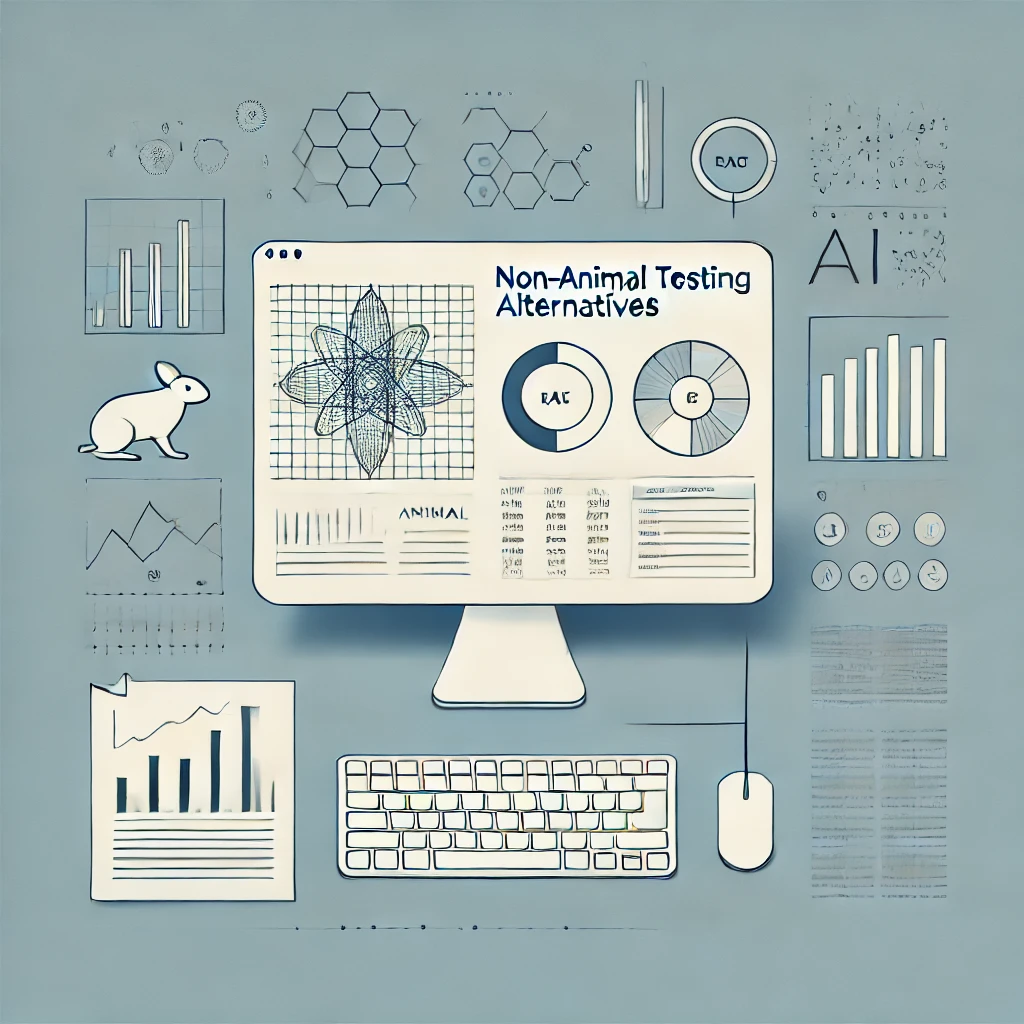A recent study conducted in Italy suggests that millions of middle-aged individuals have been incorrectly led to believe that they are not obese. The study, which focused on body fat rather than weight in relation to height, argues that using a lower cut-off for obesity would provide a more accurate representation of those affected. As people age, muscle mass decreases and fat accumulates around organs in the waist area, often without any change in weight. The challenge lies in finding a tool that can easily screen for obesity.
The standard method of categorizing weight is by calculating body mass index (BMI), which involves dividing an adult’s weight in kilograms by the square of their height in meters. A BMI of 18.5-25 is considered healthy, 25-29 suggests being overweight, and 30 or above indicates obesity. While BMI is a quick and widely used method supported by the World Health Organization (WHO), it cannot differentiate between fat, muscle, and bone. The Italian study, which examined 4,800 adults aged 40-80, proposed an alternative approach of measuring body fat percentage. The results showed that when body fat percentage was calculated using scans, a significantly higher percentage of individuals were found to be obese compared to their BMI classification.
The researchers argue that continuing to use the WHO standard for obesity screening may result in missing many middle-aged and older adults who are at risk for obesity-related diseases such as type 2 diabetes, heart disease, and certain cancers. They suggest using a BMI of 27 as the new cut-off point for defining obesity in the future. However, further studies in different countries are needed to confirm these findings. Additionally, the study did not consider the distribution of fat in individuals’ bodies or their dietary and exercise habits, which could influence their risk of obesity.
While BMI is unlikely to be replaced in the near future due to its cost-effectiveness compared to body fat scans, researchers and experts suggest that alternative definitions of obesity that include waist circumference and specific signs and symptoms of excess weight may provide more informative results. The search for a simple and accessible tool to screen for obesity continues.
Original news source: Millions more middle-aged are obese, study suggests (BBC)
🎧 Listen:
Slow
Normal
Fast
📖 Vocabulary:
| 1 | accumulates | Gathers or collects over time |
| 2 | categorizing | Arranging or organizing into groups or categories |
| 3 | differentiates | Recognizes or points out differences |
| 4 | alternative | A different option or choice |
| 5 | significantly | To a large or important degree |
| 6 | classification | The act of arranging or organizing into groups |
| 7 | screening | The process of testing or evaluating for a particular condition |
| 8 | distribution | The way in which something is spread or shared out |
| 9 | dietary | Related to food and nutrition |
| 10 | cost-effectiveness | The measure of how economically efficient something is |
| 11 | circumference | The distance around the edge of a circle or rounded object |
| 12 | accessible | Easy to approach, reach, or use |
| 13 | representation | A depiction or portrayal of something |
| 14 | obese | Having an excess amount of body fat |
| 15 | risk | The possibility of suffering harm or loss |
Group or Classroom Activities
Warm-up Activities:
– News Summary
Instructions: Divide the class into small groups. Give each group a few minutes to read the article. Then, ask each group to summarize the main points of the article in a brief news summary. Each group can present their summary to the class.
– Opinion Poll
Instructions: Divide the class into pairs. Instruct each pair to discuss their opinions on the topic of obesity and the methods used to measure it. After the discussion, conduct an opinion poll by asking each pair to share their opinions with the class. Encourage students to provide reasons for their opinions.
– Vocabulary Pictionary
Instructions: Write down key vocabulary words from the article on small pieces of paper and put them in a bag or hat. Divide the class into two teams. One person from each team will come forward and pick a word from the bag without looking. They must then draw a picture to represent the word, while their team guesses what the word is. The team that guesses the correct word gets a point.
– Pros and Cons
Instructions: Divide the class into small groups. Instruct each group to discuss the pros and cons of using BMI as a measure of obesity. After the discussion, each group can present their findings to the class. Encourage students to provide logical arguments and evidence to support their points.
– Future Predictions
Instructions: In pairs, ask students to make predictions about the future of obesity screening methods. They should consider whether BMI will continue to be the standard method or if alternative approaches, such as measuring body fat percentage, will become more widely accepted. After discussing their predictions, each pair can share their thoughts with the class.
🤔 Comprehension Questions:
1. What did the recent study in Italy focus on in relation to obesity?
2. Why does using weight in relation to height not accurately represent obesity in middle-aged individuals?
3. What is the standard method of categorizing weight?
4. How does the BMI method differ from the body fat percentage method?
5. What did the Italian study find when body fat percentage was calculated using scans?
6. What are some obesity-related diseases that middle-aged and older adults may be at risk for?
7. What new cut-off point for defining obesity do the researchers suggest?
8. What are some alternative definitions of obesity that researchers and experts suggest using?
Go to answers ⇩
🎧✍️ Listen and Fill in the Gaps:
A recent study conducted in Italy suggests that millions of middle-aged individuals have been incorrectly led to believe that they are not obese. The study, which focused on body fat rather than (1)______ in relation to (2)______, argues that using a lower cut-off for obesity would provide a more accurate representation of those (3)______. As people age, muscle mass (4)______ and fat accumulates around organs in the waist area, often without any change in weight. The challenge lies in finding a tool that can easily screen for obesity.
The standard method of categorizing weight is by calculating body mass index (BMI), which involves dividing an adult’s weight in (5)______ by the square of their height in meters. A BMI of 18.5-25 is considered healthy, 25-29 suggests being overweight, and 30 or above indicates obesity. While BMI is a (6)______ and widely used method supported by the World Health Organization (WHO), it cannot differentiate between fat, muscle, and bone. The (7)______ study, which examined 4,800 adults aged 40-80, proposed an (8)______ approach of measuring body fat percentage. The results showed that when body fat percentage was calculated using scans, a significantly higher percentage of (9)______ were (10)______ to be obese (11)______ to their BMI classification.
The researchers argue that continuing to use the WHO standard for obesity screening may result in missing many middle-aged and older adults who are at risk for obesity-related diseases such as type 2 diabetes, heart disease, and certain cancers. They suggest using a BMI of 27 as the new cut-off point for (12)______ obesity in the future. However, further studies in different countries are needed to confirm these findings. Additionally, the (13)______ did not consider the distribution of fat in individuals’ bodies or their dietary and (14)______ habits, which could influence their risk of obesity.
While BMI is unlikely to be replaced in the near (15)______ due to its cost-effectiveness compared to body fat scans, researchers and experts (16)______ that alternative definitions of obesity that include waist circumference and specific signs and symptoms of excess weight may provide more informative results. The search for a simple and accessible tool to screen for obesity continues.
Go to answers ⇩
💬 Discussion Questions:
Students can ask a partner these questions, or discuss them as a group.
1. What is the difference between weight and body fat?
2. How would you feel if you were told that you were obese, even though your weight hadn’t changed?
3. Do you think BMI is an accurate way to measure obesity? Why or why not?
4. What is the impact of muscle mass decreasing and fat accumulating around organs as people age?
5. How would you define obesity?
6. Do you think it is important to have a standardized method for categorizing weight? Why or why not?
7. What are some potential health risks associated with obesity?
8. How do you think the perception of obesity differs between cultures?
9. Do you think the new proposed cut-off point of BMI 27 for defining obesity is more accurate? Why or why not?
10. Why do you think the study did not consider the distribution of fat in individuals’ bodies or their dietary and exercise habits?
11. How do you think the perception of obesity has changed over time?
12. What are some possible reasons why BMI is unlikely to be replaced in the near future?
13. Do you think waist circumference is a better indicator of obesity than BMI? Why or why not?
14. How do you think societal standards of beauty and attractiveness influence our perception of obesity?
15. What do you think is the most effective way to screen for obesity?
Individual Activities
📖💭 Vocabulary Meanings:
Match each word to its meaning.
Words:
1. accumulates
2. categorizing
3. differentiates
4. alternative
5. significantly
6. classification
7. screening
8. distribution
9. dietary
10. cost-effectiveness
11. circumference
12. accessible
13. representation
14. obese
15. risk
Meanings:
(A) A depiction or portrayal of something
(B) The act of arranging or organizing into groups
(C) Having an excess amount of body fat
(D) Recognizes or points out differences
(E) A different option or choice
(F) Related to food and nutrition
(G) To a large or important degree
(H) The way in which something is spread or shared out
(I) Easy to approach, reach, or use
(J) The measure of how economically efficient something is
(K) Arranging or organizing into groups or categories
(L) The possibility of suffering harm or loss
(M) Gathers or collects over time
(N) The process of testing or evaluating for a particular condition
(O) The distance around the edge of a circle or rounded object
Go to answers ⇩
🔡 Multiple Choice Questions:
1. What was the focus of the recent study conducted in Italy?
(a) Body fat
(b) Weight
(c) Height
(d) Muscle mass
2. What is the standard method of categorizing weight?
(a) Body fat percentage
(b) Body mass index (BMI)
(c) Waist circumference
(d) Muscle mass
3. What does a BMI of 30 or above indicate?
(a) Obesity
(b) Overweight
(c) Healthy weight
(d) Underweight
4. What did the Italian study propose as an alternative approach to measuring obesity?
(a) Measuring muscle mass
(b) Measuring waist circumference
(c) Measuring body fat percentage
(d) Measuring weight
5. What did the results of the Italian study show?
(a) Fewer individuals were found to be obese when body fat percentage was calculated using scans compared to their BMI classification
(b) The same number of individuals were found to be obese when body fat percentage was calculated using scans compared to their BMI classification
(c) The study did not provide any results
(d) More individuals were found to be obese when body fat percentage was calculated using scans compared to their BMI classification
6. What obesity-related diseases are mentioned in the article?
(a) Type 1 diabetes, lung disease, and arthritis
(b) High blood pressure, asthma, and depression
(c) Type 2 diabetes, heart disease, and certain cancers
(d) None of the above
7. What do the researchers suggest as the new cut-off point for defining obesity?
(a) BMI of 25
(b) BMI of 27
(c) BMI of 30
(d) BMI of 18.5
8. What do researchers and experts suggest as alternative definitions of obesity?
(a) Body fat percentage and muscle mass
(b) Weight and height
(c) None of the above
(d) Waist circumference and specific signs and symptoms of excess weight
Go to answers ⇩
🕵️ True or False Questions:
1. The Italian study examined 2,800 adults aged 30-70 and proposed using body fat scans to calculate obesity instead of BMI.
2. A recent study conducted in Italy challenges the current method of categorizing weight based on body mass index (BMI).
3. The ease lies in finding a tool that can readily screen for obesity.
4. As people age, muscle mass increases and fat accumulates around organs in the waist area, often without any change in weight.
5. The researchers suggest using a BMI of 27 as the new cut-off point for defining obesity in the future.
6. Alternative definitions of obesity that include waist circumference and specific signs and symptoms of excess weight may provide more informative results.
7. The study argues that using body fat percentage instead of BMI would provide a more accurate representation of obesity.
8. The results of the study showed that a lower percentage of individuals were found to be obese when body fat percentage was used instead of BMI.
Go to answers ⇩
📝 Write a Summary:
Write a summary of this news article in two sentences.
Check your writing now with the best free AI for English writing!
Writing Questions:
Answer the following questions. Write as much as you can for each answer.
Check your answers with our free English writing assistant!
1. What does the recent study in Italy suggest about middle-aged individuals and obesity?
2. What is the challenge in accurately screening for obesity?
3. How is weight typically categorized using the standard method?
4. What alternative approach did the Italian study propose for measuring obesity?
5. What are the potential risks of using the current standard for obesity screening?
✅ Answers
🤔✅ Comprehension Question Answers:
1. The recent study in Italy focused on body fat rather than weight in relation to height in relation to obesity.
2. Using weight in relation to height does not accurately represent obesity in middle-aged individuals because as people age, muscle mass decreases and fat accumulates around organs in the waist area, often without any change in weight.
3. The standard method of categorizing weight is by calculating body mass index (BMI).
4. The BMI method involves dividing an adult’s weight in kilograms by the square of their height in meters, while the body fat percentage method measures the actual percentage of body fat using scans.
5. The Italian study found that when body fat percentage was calculated using scans, a significantly higher percentage of individuals were found to be obese compared to their BMI classification.
6. Middle-aged and older adults may be at risk for obesity-related diseases such as type 2 diabetes, heart disease, and certain cancers.
7. The researchers suggest using a BMI of 27 as the new cut-off point for defining obesity in the future.
8. Some alternative definitions of obesity that researchers and experts suggest using include waist circumference and specific signs and symptoms of excess weight.
Go back to questions ⇧
🎧✍️✅ Listen and Fill in the Gaps Answers:
(1) weight
(2) height
(3) affected
(4) decreases
(5) kilograms
(6) quick
(7) Italian
(8) alternative
(9) individuals
(10) found
(11) compared
(12) defining
(13) study
(14) exercise
(15) future
(16) suggest
Go back to questions ⇧
📖💭✅ Vocabulary Meanings Answers:
1. accumulates
Answer: (M) Gathers or collects over time
2. categorizing
Answer: (K) Arranging or organizing into groups or categories
3. differentiates
Answer: (D) Recognizes or points out differences
4. alternative
Answer: (E) A different option or choice
5. significantly
Answer: (G) To a large or important degree
6. classification
Answer: (B) The act of arranging or organizing into groups
7. screening
Answer: (N) The process of testing or evaluating for a particular condition
8. distribution
Answer: (H) The way in which something is spread or shared out
9. dietary
Answer: (F) Related to food and nutrition
10. cost-effectiveness
Answer: (J) The measure of how economically efficient something is
11. circumference
Answer: (O) The distance around the edge of a circle or rounded object
12. accessible
Answer: (I) Easy to approach, reach, or use
13. representation
Answer: (A) A depiction or portrayal of something
14. obese
Answer: (C) Having an excess amount of body fat
15. risk
Answer: (L) The possibility of suffering harm or loss
Go back to questions ⇧
🔡✅ Multiple Choice Answers:
1. What was the focus of the recent study conducted in Italy?
Answer: (a) Body fat
2. What is the standard method of categorizing weight?
Answer: (b) Body mass index (BMI)
3. What does a BMI of 30 or above indicate?
Answer: (a) Obesity
4. What did the Italian study propose as an alternative approach to measuring obesity?
Answer: (c) Measuring body fat percentage
5. What did the results of the Italian study show?
Answer: (d) More individuals were found to be obese when body fat percentage was calculated using scans compared to their BMI classification
6. What obesity-related diseases are mentioned in the article?
Answer: (c) Type 2 diabetes, heart disease, and certain cancers
7. What do the researchers suggest as the new cut-off point for defining obesity?
Answer: (b) BMI of 27
8. What do researchers and experts suggest as alternative definitions of obesity?
Answer: (d) Waist circumference and specific signs and symptoms of excess weight
Go back to questions ⇧
🕵️✅ True or False Answers:
1. The Italian study examined 2,800 adults aged 30-70 and proposed using body fat scans to calculate obesity instead of BMI. (Answer: False)
2. A recent study conducted in Italy challenges the current method of categorizing weight based on body mass index (BMI). (Answer: True)
3. The ease lies in finding a tool that can readily screen for obesity. (Answer: False)
4. As people age, muscle mass increases and fat accumulates around organs in the waist area, often without any change in weight. (Answer: False)
5. The researchers suggest using a BMI of 27 as the new cut-off point for defining obesity in the future. (Answer: True)
6. Alternative definitions of obesity that include waist circumference and specific signs and symptoms of excess weight may provide more informative results. (Answer: True)
7. The study argues that using body fat percentage instead of BMI would provide a more accurate representation of obesity. (Answer: True)
8. The results of the study showed that a lower percentage of individuals were found to be obese when body fat percentage was used instead of BMI. (Answer: False)
Go back to questions ⇧













